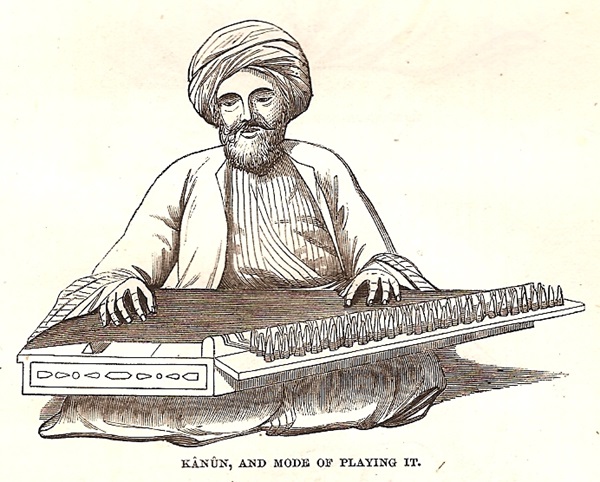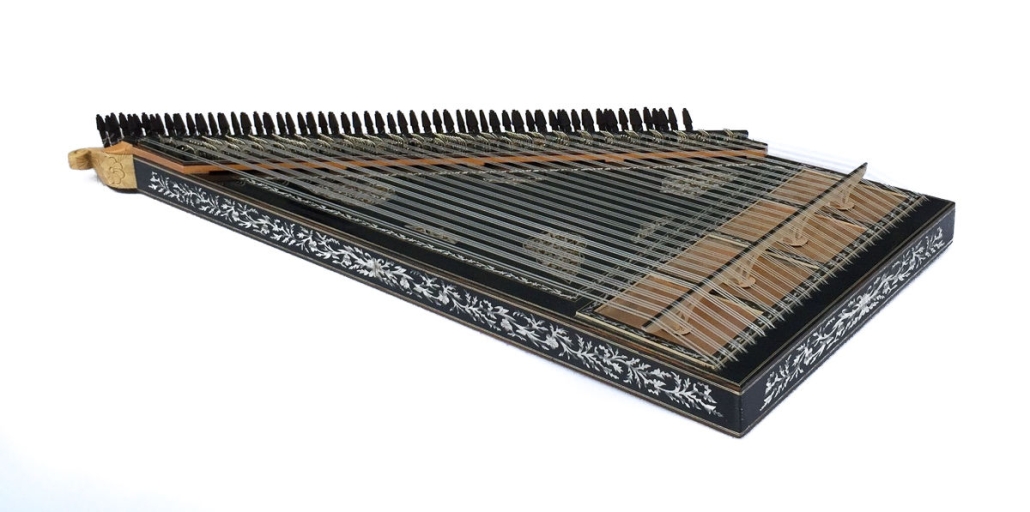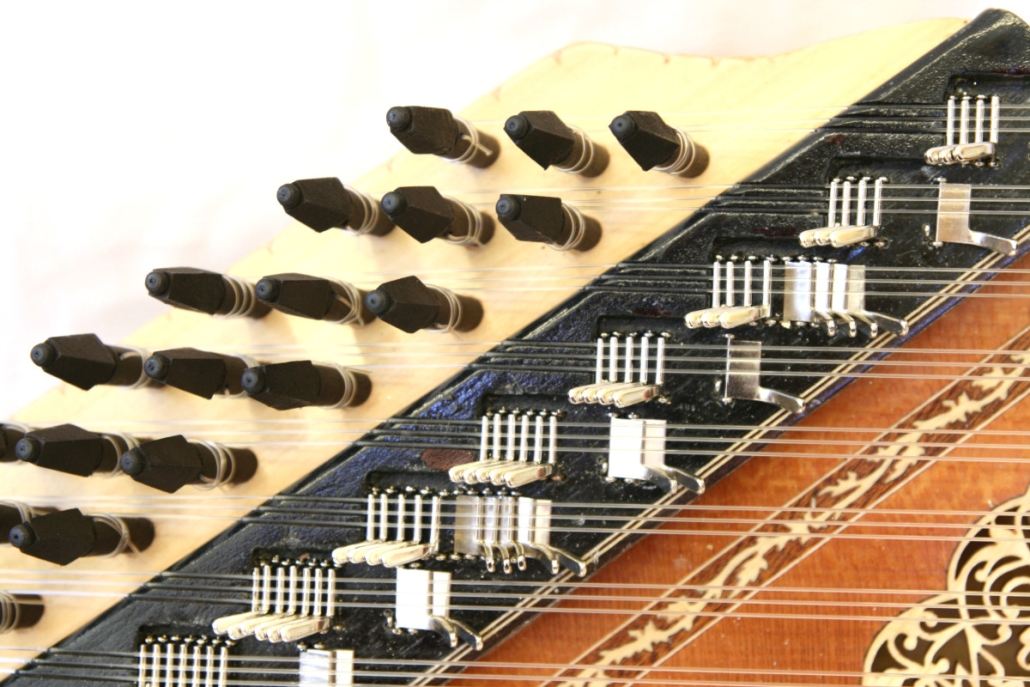Qanun Instrument Origin
Qanun is a string instrument mostly popular in Middle Eastern countries. It is an instrument played solo or in groups in most parts of Iran, the Arab East, and Arab regions of North Africa. As years went by, the instrument became more popular in some parts of West Africa and Central Asia because of the migration of the Arab tribes. Some people consider it as a descendant of the old Egyptian Harp. The instrument was also known in old Armenia and Greece. The name, Qanun, derives from the ancient Greek ‘Kanon’ meaning rule or principle. You can trace its origins to an Assyrian instrument that existed in Mesopotamia from the Old Assyrian Empire, especially since the 19th century. The instrument name is spelled in various ways, such as Qanun, Kanoon, Kanon, Ganon, Canon, or Qanoon. This name was given to the instrument because it lays down the pitch law for other instruments and singers.
Qanun, the piano of the east, has different types with no similar backstories. There are two famous backstories about the origin of it.
- The Old Version
- The New Version
The first one is more acceptable for those who study music history or have music degrees. It is believed that the instrument was brought to Cairo, Egypt by a Syrian refugee during the Ottoman Empire. The other tale that started in the 19th century states that the instrument was made by Mahmut Usta, a Turkish Qanun maker who was not satisfied with the first version of it. As readers and music listeners, we all know that historians and experts must verify the existing ideas to reach a unit ideology about the real origin of this instrument.
Qanun the reflection of oriental music
Qanun is an instrument reflecting Oriental music exceptionally. It has influenced the world’s Oriental music since the 10th century. Nowadays the amazing sound of this instrument plays a great role in traditional and modern Oriental music. If you are interested in the history of music, you may have heard that inventing this instrument is inspired by the wind’s sound dancing in the air trying to make the dead birds alive again. Based on an old tale, it was created by Al-Farabi and based on another one Al-Farabi just improved the existing instrument and called it Qanun. Some similar stories have always existed for different musical instruments. However, there is no doubt that it was used for thousands of years by many people such as the Sumerians, Ancient Egyptians, and Persians which is backed up by many historical resources.
Qanun’s shape
Designed as a Wooden Psaltery, Qanun is made of a trapezoid body with a flat top and bottom and also a curved back. This instrument often has 78 strings stretching in its board. There are different types of it with 24, 25, 26, and 27 courses of strings, each course has 3 strings. Due to the octaves of it, the instrument can produce a wide range of sounds. Players rapidly move their fingers and strike the strings to create amazing various sounds and rhythms to accompany the vocalists. Musicians usually sit on a chair, place this instrument on their knees, and play the rhythms using ivory plectra (finger picks). As in other instruments, different types of wood are used to make it. Producing sound with this instrument is challenging since it has many strings and is a hard instrument to tune.
The authentic sound Qanun plays focuses on playability and realism. According to its special characteristics, it is one of the best-known plucked instruments in the world. It was not easy to compile modern and traditional techniques to produce what was needed before having this instrument. Its versatile range of sounds is exceptionally interesting for different singers and composers. Similar to all types of musical instruments such as traditional and modern ones, Qanun has its figures and players who play an impressive role in knowing the instrument’s origin. They also have always devoted their love and life to learning new techniques to play the instrument in the best way possible. Great players and musicians are great actors whose job is to introduce the instrument to all the world. Not only Iran but also other countries have so many great and talented Qanun players. Some of them are introduced in the next part of the article.
The best players
Not surprisingly, each musical instrument has some unique and famous players who devoted their lives to increasing the sublimity of that instrument. Qanun as an international music instrument, has had lots of famous players. From Iran to Turkey and from Morocco to America, they are as follows:
- Emad Shakuri
The Iranian Qanun master who has recorded more than 120 albums. He has traveled to many countries all around the world and has cooperated with so many great singers. Besides his amazing talent in playing this instrument, he uses all his fingers to produce a delightful and amazing sound.
- Marjan Mehraban
The Iranian Qanun player
Syrian musician and composer
- Ara Topouzian
Armenian-American musician
- Aytaç Doğan
Turkish musician
- Farah Fersi
Musician from Tunisia
- Hassan Erraji
Moroccan musician, singer, songwriter, multi-instrumentalist, arranger, and composer
- Hicham Chami
Qanun performer based in Chicago
- Khalil Ghadri
Syrian composer and Qanun player
- Maged Serour
Egyptian Qanun professor
These are some examples of the great Qanun players and professors from all around the world.
The best players
Conclusion
In this article, we have tried to give as much information as possible about the history of Qanun and different stories about it. Its various types and shapes are described and some of the most famous international players of it are introduced as well. As one of the hardest-to-play musical instruments, it is considered an Eastern piano. The range of its sounds and rhythms are among the widest which supports different pitches of sound. Although it is among the oldest musical instruments, it can comply with modern music as well. This makes it one of the most enticing and attractive instruments in modern music.




